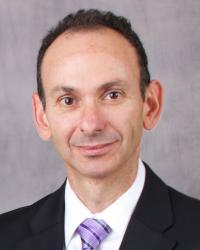
Biography
Professor Shumlak completed his undergraduate work at Texas A & M University and then obtained his PhD in Nuclear Engineering from the University of California at Berkeley. After finishing his graduate degree, he was a National Research Council postdoctoral fellow at the Air Force Phillips Laboratory in Albuquerque, New Mexico, where he wrote MACH3, a 3-D, time-dependent magnetofluid code for non-ideal plasmas in complex geometries. Professor Shumlak joined the University of Washington after leaving the Phillips Lab, though he still maintains close ties to the Air Force Research Lab and often performs research in support of their applications. He is actively involved in research and has been invited to speak at numerous international conferences. He has won numerous awards for his teaching, research, and mentoring. Professor Shumlak is a Fellow of the American Physical Society, an Associate Fellow of the American Institute of Aeronautics and Astronautics, and a Senior Member of the Institute of Electrical and Electronics Engineers. He has also co-founded Zap Energy - a spin-out company from the UW to develop commercial fusion applications.
Professor Shumlak's research areas are plasma physics, theoretical and computational plasma modeling, innovative magnetic plasma confinement for fusion energy, and electric propulsion. His work includes theoretical and experimental investigation of the stabilizing effect of sheared flows in magnetically confined plasmas. A sheared-flow-stabilized Z pinch would have immediate applications as a near-term fusion thruster for space exploration and a compact fusion energy source. The concept of flow stabilization would also have applications to other magnetic confinement devices and astrophysical plasmas. The flow Z-pinch concept has also been developed into an extreme ultraviolet (EUV) light source, which is applicable for next generation lithography. Professor Shumlak develops advanced plasma modeling algorithms that use an approximate-Riemann solver and high-order finite element methods for studying the time evolution of plasma dynamics. He also researches electric propulsion devices. He recently developed a novel method to produce high current ion sources based on using ultrasonic actuators to excite unstable waves in a liquid and applying an electric field to extract monodisperse, charged droplets. The source has applications to nanoparticle spraying, composite coating, and electric propulsion.